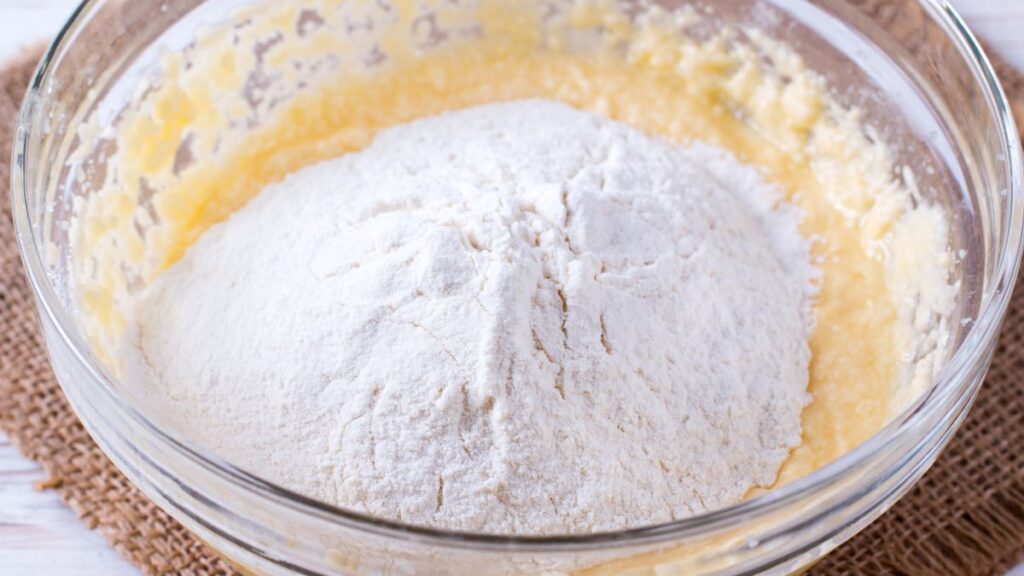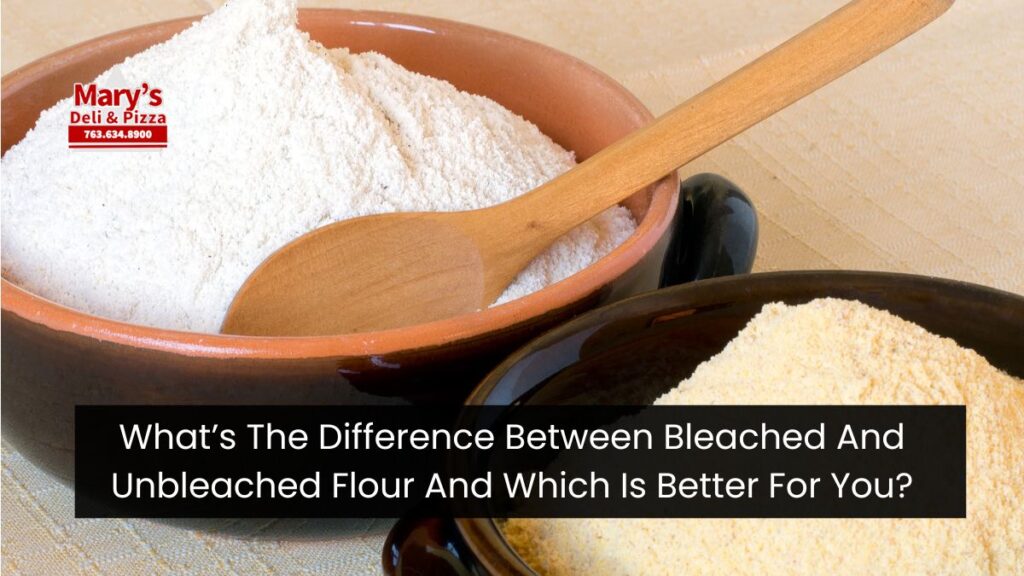When you stroll through the baking aisle, you’re likely to come across a variety of flours—especially bleached and unbleached flour.
Both are common ingredients for cooking and baking, but do you know the difference between them and how they affect your recipes and health?
In this article, we’ll explore the processing methods, nutrient profiles, uses, and safety concerns around bleached and unbleached flour, offering insights into which might be the best choice for your kitchen.
What Is Bleached Flour?
Bleached flour is treated with chemical agents, such as benzoyl peroxide, potassium bromate, or chlorine, to speed up the aging process.

Aging flour is crucial in enhancing its baking qualities. However, instead of waiting for the flour to naturally age, the bleaching process speeds it up by making the flour whiter and finer.
This quick aging process significantly impacts the flour’s taste, texture, and appearance. Bleached flour tends to have a softer texture and whiter color.
It’s also more fine-grained than unbleached flour, which makes it an excellent choice for baking cakes, cookies, pancakes, and pie crusts.
What is Unbleached Flour?
Unbleached flour, as the name suggests, is left to age naturally after being milled, which takes longer.
It isn’t exposed to chemicals for this process, leading to a flour that is off-white and eventually fades to a lighter color over time as it ages naturally.

Because it’s not chemically treated, unbleached flour has a denser texture and tougher grain.
This makes it well-suited for recipes where the structure is important, such as yeast breads, puff pastries, and other baked goods that need to hold their shape.
Processing Differences
One of the most significant differences between these two types of flour is their processing:
- Bleached flour undergoes a chemical treatment to artificially age and whiten it. This process is intended to create a softer flour that’s ideal for light and airy baked goods.
- Unbleached flour ages naturally, which gives it a slightly denser consistency and a more natural color, without the need for chemical treatment.
This natural aging process can take weeks or months, while bleached flour is ready much quicker, making it more commonly available and sometimes cheaper in stores.
Texture, Taste, And Appearance
The bleaching process doesn’t just affect the aging time—it also changes the texture, taste, and appearance of the flour.
- Bleached flour is whiter, has a finer grain, and tends to result in a softer final product. This makes it the better choice for light, fluffy cakes or pastries where a delicate texture is essential.
- Unbleached flour is often denser with a tougher texture. Though it is off-white in color, it naturally lightens as it ages. Some bakers prefer the slightly nutty flavor that comes with using unbleached flour in their recipes.
When it comes to taste, those with sensitive palates may notice a slightly bitter flavor in bleached flour due to the chemicals used in the process, though this is usually very subtle.
Nutritional Differences
From a nutritional standpoint, bleached and unbleached white flour are very similar. Both contain the same basic macronutrients per cup (125 grams):
- Calories: Roughly 455
- Protein: About 13 grams
- Fat: Approximately 1 gram
- Carbohydrates: Around 95 grams
- Fiber: About 3-4 grams
While bleaching can reduce the amount of some nutrients, particularly vitamin E, both types of flour are often enriched with vitamins like folate, niacin, vitamin B6, and thiamine.
This means that some lost nutrients are added back into the flour after processing.
If you’re looking for a more nutritious option, you may want to consider whole-wheat flour. Unlike bleached or unbleached white flour, whole-wheat flour contains more fiber, vitamin E, and antioxidants, along with higher levels of minerals like manganese and copper.
Safety Concerns With Bleached Flour
One of the most debated aspects of bleached flour is the safety of the chemicals used in the bleaching process.
- Potassium bromate, one of the chemicals used to bleach flour, has been banned in the European Union and several other countries due to concerns that it may increase the risk of cancer. It is still legal in the United States, but some companies have voluntarily removed it from their products.
- Benzoyl peroxide is another chemical commonly used to bleach flour. While it is generally considered safe by the FDA, some studies suggest that it may reduce the antioxidant content of foods.
Despite these concerns, the levels of these chemicals in bleached flour are relatively low, and the FDA considers it safe for consumption.
However, if you prefer to avoid these chemicals, you might want to opt for unbleached or whole-wheat flour, which do not undergo the same treatment.
When To Use Bleached vs. Unbleached Flour
Understanding when to use bleached versus unbleached flour can greatly improve your baking results. Here are a few examples of when to use each:
- Bleached flour is ideal for lighter baked goods such as:
- Cakes
- Pancakes
- Waffles
- Cookies
- Quick breads
- Pie crusts
- Unbleached flour is a better choice for:
- Yeast breads
- Puff pastries
- Eclairs
- Popovers
While these are some recommended uses, both types of flour can often be used interchangeably in most recipes without significantly altering the final product. Just keep in mind that bleached flour tends to absorb more liquid, so small adjustments might be needed when substituting one for the other.
Environmental And Ethical Considerations
Beyond health and culinary concerns, some people prefer unbleached flour because it avoids using chemicals in the aging process.
If you’re looking to reduce your environmental footprint, choosing unbleached, organic, or whole-wheat flours might be a more eco-friendly and ethical option.
Final Thoughts
In the debate of bleached vs. unbleached flour, neither is inherently better than the other—it simply depends on your personal preferences and baking needs.
If you’re looking for a finer grain and softer texture for delicate baked goods, bleached flour may be your best bet.
However, if you prefer a more natural product with a denser texture and are wary of the chemicals used in bleaching, unbleached flour is a great alternative.
Ultimately, for everyday use, both bleached and unbleached flours are safe and nutritionally similar, but opting for unbleached whole-wheat flour may help boost your intake of fiber and micronutrients, giving you a more wholesome option for your health-conscious baking projects.






